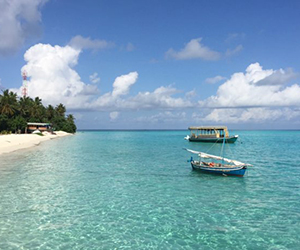Although the tools used in building of Dhonis have changed, little has changed of its basic design. As in the past, the boats are still being built without a documented plan. The design and symmetry of the boat emerges as the boat is being built.
Imported hardwoods are used in the place of coconut wood, which was used in place of coconut wood, which was used in the past to make the hull. Copper rivets are used to hold the planks together instead of coir, which was used for the purpose even half a century ago. The square sail made of coconut fronds gave way to a triangular lateen sail. Even though this is still considered essential and is carried on board, it is used only during emergencies or to ease the strain of the engines. Almost all Dhonis are driven by diesel power.
Dhonis are mainly used for fishing and provide the livelihood for a large proportion of the population. Others are modified to be used for transportation of passengers.
A dhoni may be as small as 10ft. (3 m) used mostly to travel across short distances or to traverse the shallow waters of the lagoon. Islanders often use these ferry across to nearby islands for firewood. The average fishing dhoni used to be around 10 metres (33 feet), however the new generation fishing vessels can be twice the size or even larger. The basic design of dhonis has proven to be seaworthy as it has been tested and tuned for centuries. Even the luxury cruise vessels that are built in the country uses the same basic hull design and can be as long as 30 meters (100 feet) or more.


